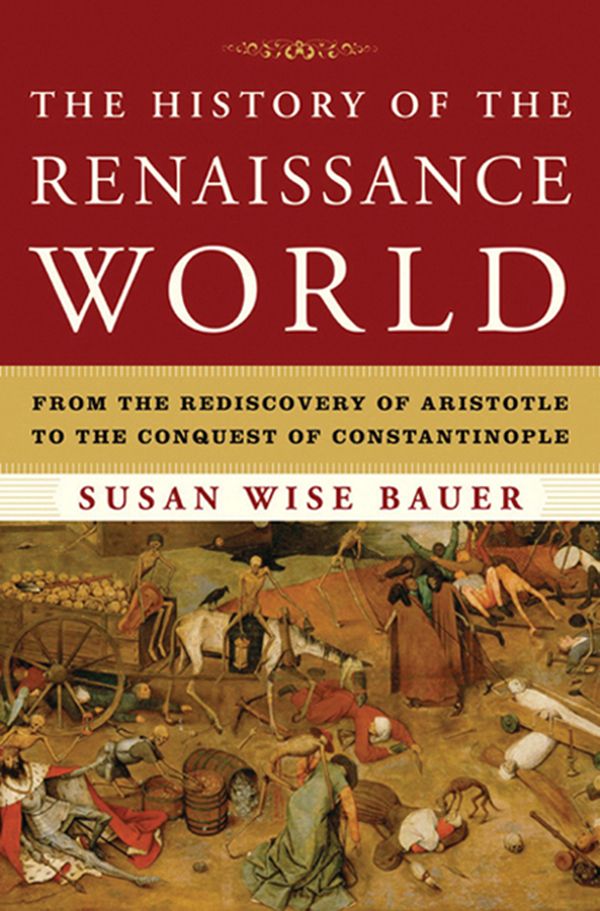
The History of the Renaissance World
From the Rediscovery of Aristotle to the Conquest of Constantinople
کتاب های مرتبط
- اطلاعات
- نقد و بررسی
- دیدگاه کاربران
نقد و بررسی

June 10, 2013
Readers hoping for a glimpse into the life and times of Michelangelo and Da Vinci will be disappointed by Bauer’s newest (after The History of the Medieval World): “This is not a history of ‘the Renaissance.’ Rather, it is a history of the world during… a rebirth of interest in classical learning.” That said, this volume is still rife with captivating figures, momentous movements, violent wars, and climactic upheavals. Beginning with the 12th-century rise of the Plantagenets in England and ending with the 1453 Ottoman overthrow of the Byzantine Empire, Bauer ranges far and wide, touching on everything from the gruesome murder of the Archbishop of Canterbury; the ascendancy of the first king of the Incan Empire; the terrorization of the Asian Steppe by Mongol hordes; the relocation of the papacy from Rome to Avignon; the birth of the Inquisition in Toulouse, France; the beginnings of the African slave trade; and the bubonic plague’s decimating sweep across Europe. In five sections (Renaissances; Invasions, Heresies, and Uprisings; Catastrophes; Regroupings; and Endings), Bauer covers a bewildering amount of territory in her attempt to offer a tantalizing global perspective of a tumultuous epoch. Unfortunately, she too often sacrifices depth for breadth. 22 illus. & 96 maps. Agent: Richard Henshaw, Richard Henshaw Group.

June 15, 2013
Another expertly clarified primer by Bauer (History/Coll. of William &Mary; The History of the Medieval World, 2010, etc.) organizes by themes the chaos of the medieval world into a semblance of cohesive law, migratory logic and religious fervor that would later explode into the Renaissance. The author has an excellent eye for presenting her subject in bold strokes, memorable themes and without undue clutter. Her work is grounded in the notion of the Renaissance (or, as she posits in the plural: renaissances) as gaining seismic steam in the 12th century, with translation of classic texts by Gerard of Cremona and others. The debate between reason and faith was engaged, proving hugely subversive to central powers. The violent, epic thrusts of peoples also marked the period: The Crusades were launched by the Byzantine emperor in Constantinople; the Muslim kingdoms battled to capture the Spanish peninsula, spreading into Africa and northern India; England and France dissolved into frequent anarchy and civil war, leading to the rise of the Plantagenets; roiling ensued in the Hindu and Buddhist kingdoms of Sri Lanka and India; the shoguns ruled in Japan, the Ming in China; great empires like the Incas and later Aztecs rose in South and Central America; and the Mongols galvanized their ferocious military might and set their sights to the west and south. This was the era of Genghis Khan, Frederick Barbarossa, Saladin, Richard the Lionheart, Osman, Robert Bruce and Mansa Musa of Mali, as well as the Magna Carta, Inquisition, the plague and the spread of the Portuguese slave trade into Africa. Already splintered, Byzantium would be eclipsed by the Turkish conquest of Constantinople in 1453, provoking new exoduses of peoples, west and east, "the seeds of new nations; the roots of new wars." Bauer ably captures it all. A wide-angle, thorough world survey for students, complete with immensely useful timelines and maps.
COPYRIGHT(2013) Kirkus Reviews, ALL RIGHTS RESERVED.

























دیدگاه کاربران